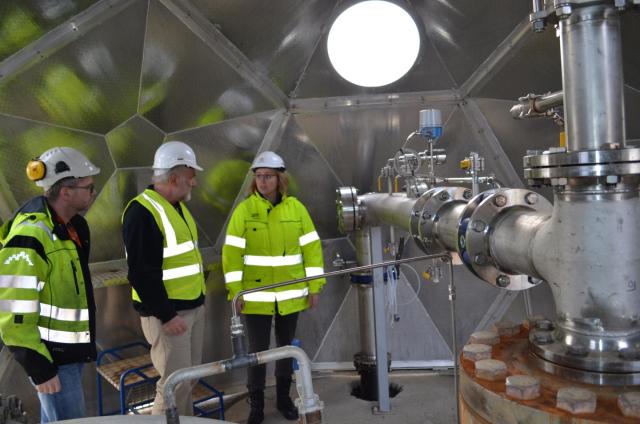It sounds more like a Game Of Thrones plot- locking away a dire threat to the world in a rock and sending it deep within earth forever. However, in real life, the monster that is being locked away here is not a white walker but carbon dioxide and in place of Valerian steel, they are using volcanic basalt to get rid of it. And in place of Night’s Watch heroes we have a team of engineers and scientists that demonstrated pumping of carbon dioxide into basalt and its conversion into solid within a few months.
This project was carried out in a Geothermal power plant based in Iceland’s Hellisheidi. It is one of the largest geothermal plants across the globe that has a generation capacity of 303 MW electricity and 133MW hot water. Called as Reykjavik Energy, the team working here started mixing carbon dioxide with hydrogen sulfide and water and reinjected it into volcanic basalt located beneath the facility.
Carbon has a natural tendency to precipitate into a white, chalky mineral whenever it gets mixed with water and basalt. However, the process took place on a much faster pace than expected. As per previous studies and researches, the scientists predicted that a process like this will take thousands and hundreds of years. However, the team discovered that around 95 percent of carbon injected in the volcanic basalt solidified within 2 years.

During the experiment, the plant pumped around 250 tons of CO2 mixed with hydrogen sulfide and water around 400-800m beneath the surface. They took samples from nearby wells signified the amount of carbon that was rapidly mineralized in a period of few months. It motivated the team to inject around 5, 000 tons of carbon dioxide every year. Recently taken results indicate the rapid pace of mineralization which has been constant in last few years.
An effort like this could be successful in Iceland due to a number of reasons. Firstly, the plant emits around 40, 000 tons of carbon dioxide on an annual basis that is approx. five percent of total amount emitted by other plants in same period. Secondly, it is located on basalt containing calcium, magnesium, and iron that are needed for precipitation of carbon. However, the project also has some obstacles. It needs large amount of water which can’t be fetched everywhere. Another bigger issue is of the subterranean microbes that eat these carbonate minerals and emit methane. As per previous researches, these organisms were believed to exist on ocean floors but recently these were found in a Californian spring.
Filed Under: News


Questions related to this article?
👉Ask and discuss on Electro-Tech-Online.com and EDAboard.com forums.
Tell Us What You Think!!
You must be logged in to post a comment.